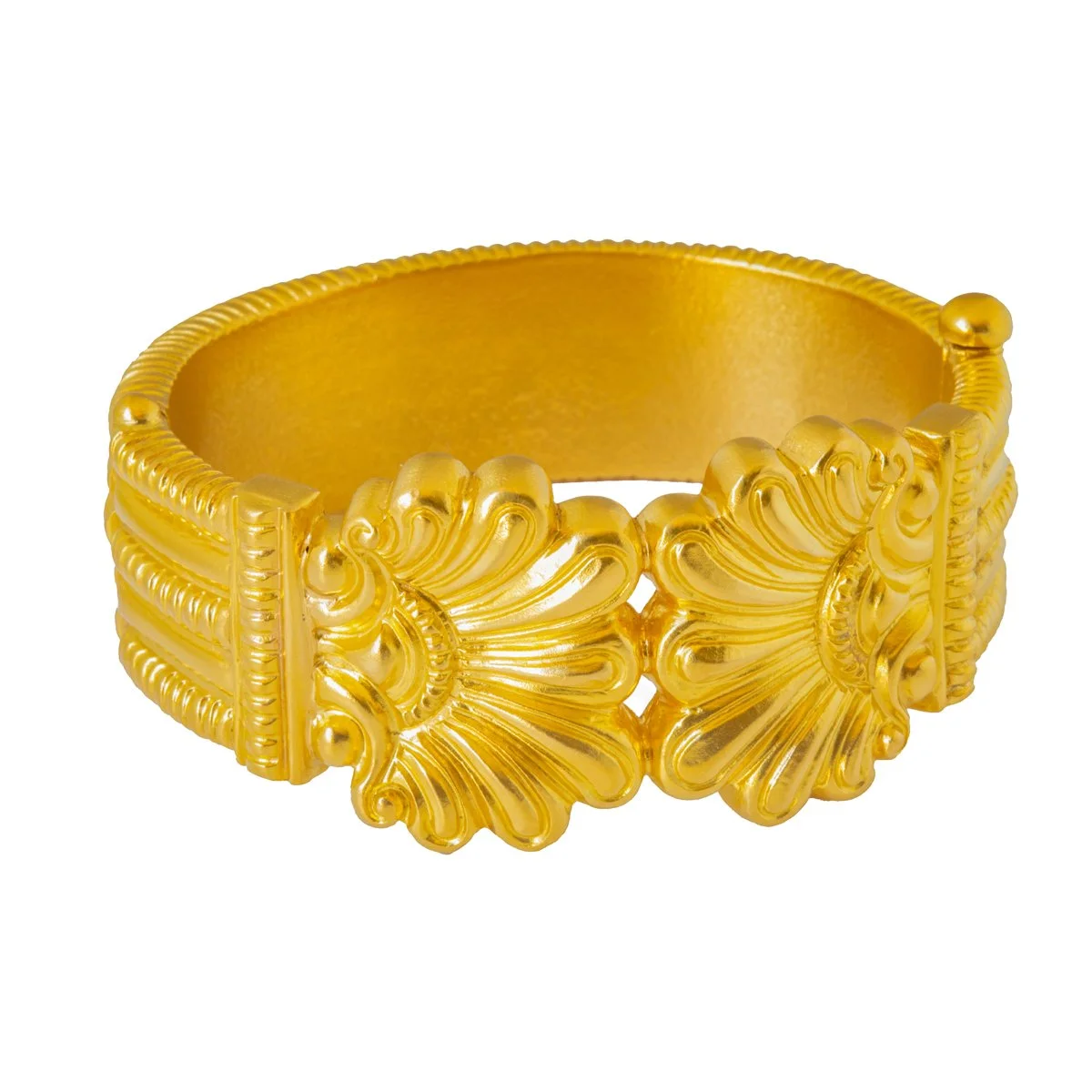Nimrud Bracelet
KGB-015
92.19 grams of 22K gold
27mm wide
Made to order
On the eastern bank of the Tigris River, southwest of what is today Mosul, Iraq, lay the 2nd capital of the Assyrian Empire (883-859BCE). Today it is known as Nimrud, in antiquity it was known as Kalhu. Beginning in 1949 and running all the way until 2001, archaeologists uncovered a series of tombs. These tombs followed the Mesopotamian tradition of being constructed under the homes in which the deceased people lived. A series of "queen's tombs" have produced an amazing collection of ancient gold jewelry, which show the wealth and social importance of those buried there. This bracelet was inspired by a series of three pairs of bracelets found in Tomb III in 1989.
While we can't determine the exact identity of the woman buried with these bracelets, a neighboring body in Tomb III has been identified as a queen. Given that the unidentified body was surrounded by even more jewelry and other sumptuous objects than the queen, it is likely that this woman was of even more social importance.
In an extraordinary clash of ancient and modern histories, much of the treasure that was found in these tombs wound up in a local Mosul museum with the probable intention of being moved to Bagddad eventually. But the Kuwait crisis of 1990 and the invasion of Iraq in 2003, led to the plundering of the museum by local people. Some objects were taken so that they could be protected for posterity, some were taken to be melted down or sold. Incredibly, the archeologists engaged in this years' long effort had recorded their work so well that the book, Nimrud: The Queen's Tombs, by Mazahim Hussein was at least able to capture the story and richness of these treasures.
KGB-015
92.19 grams of 22K gold
27mm wide
Made to order
KGB-015
92.19 grams of 22K gold
27mm wide
Made to order


